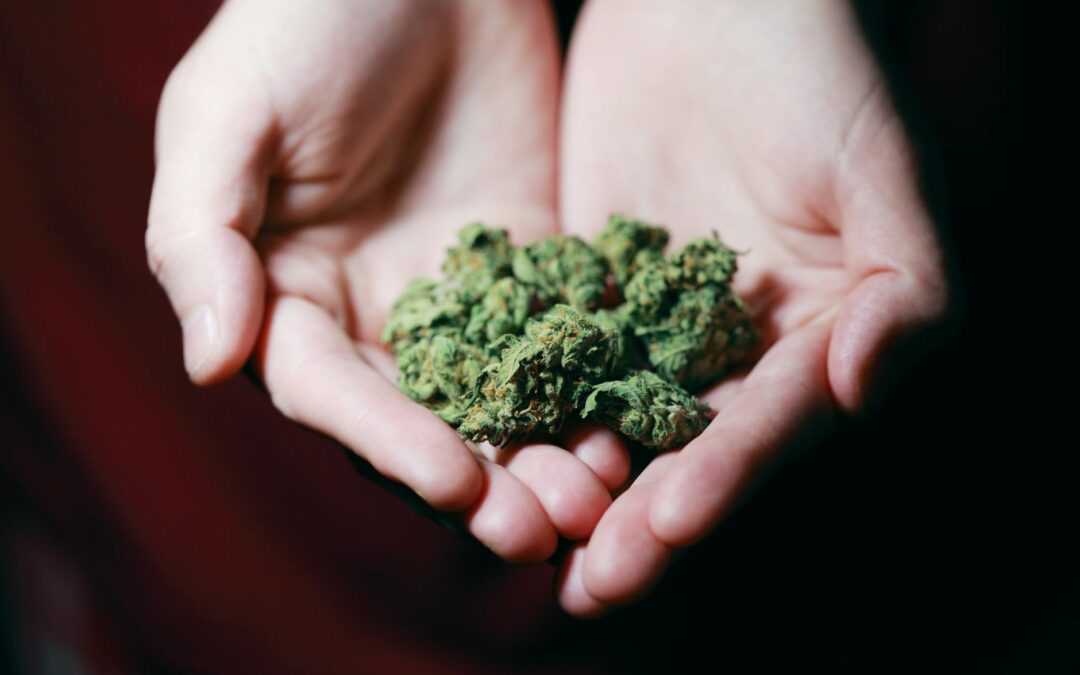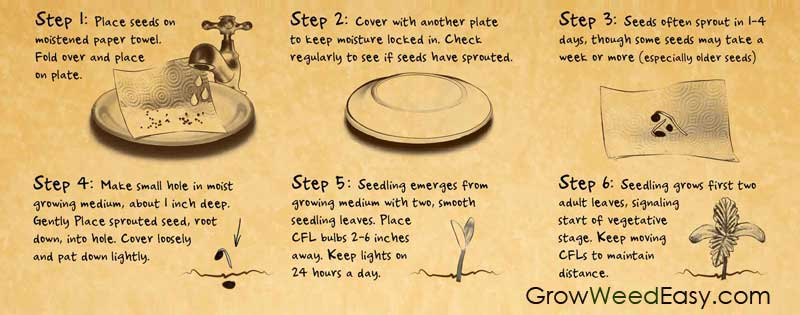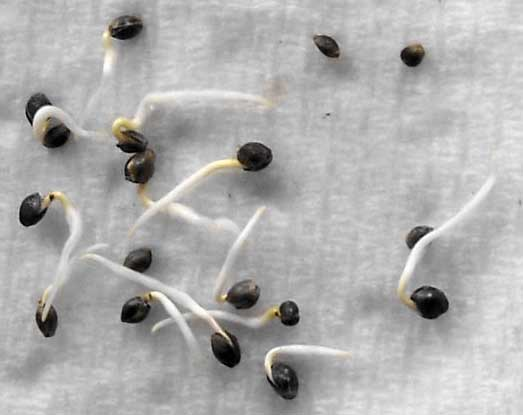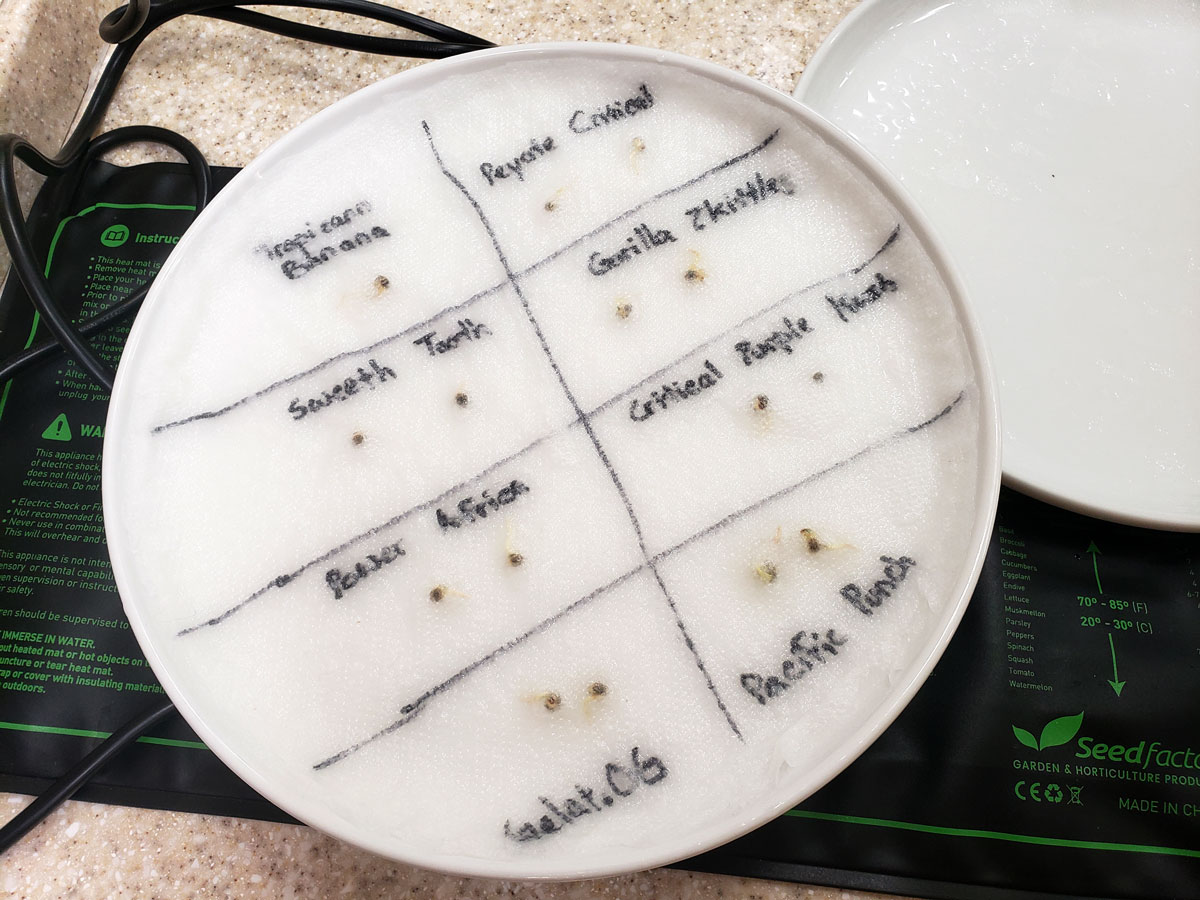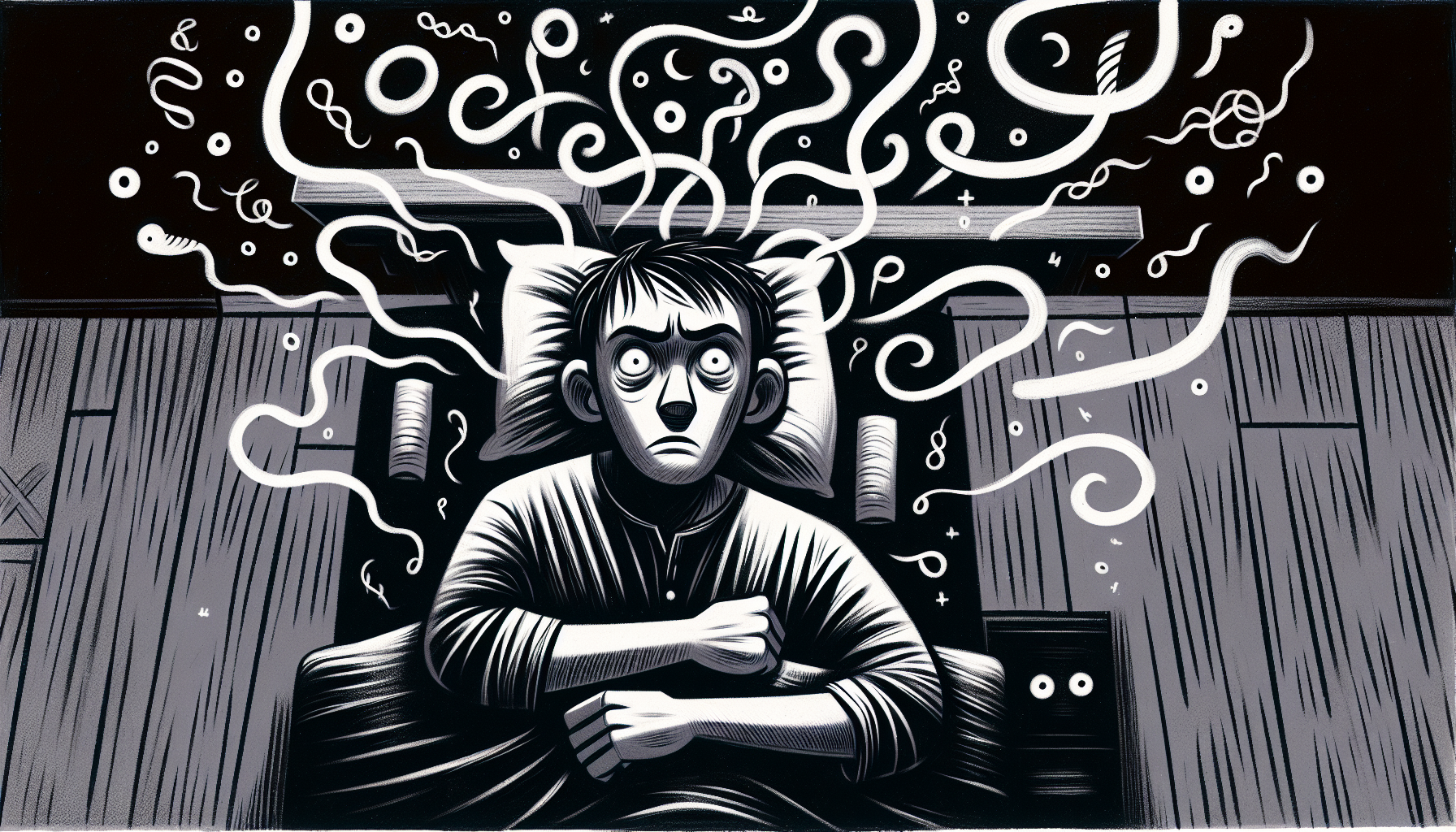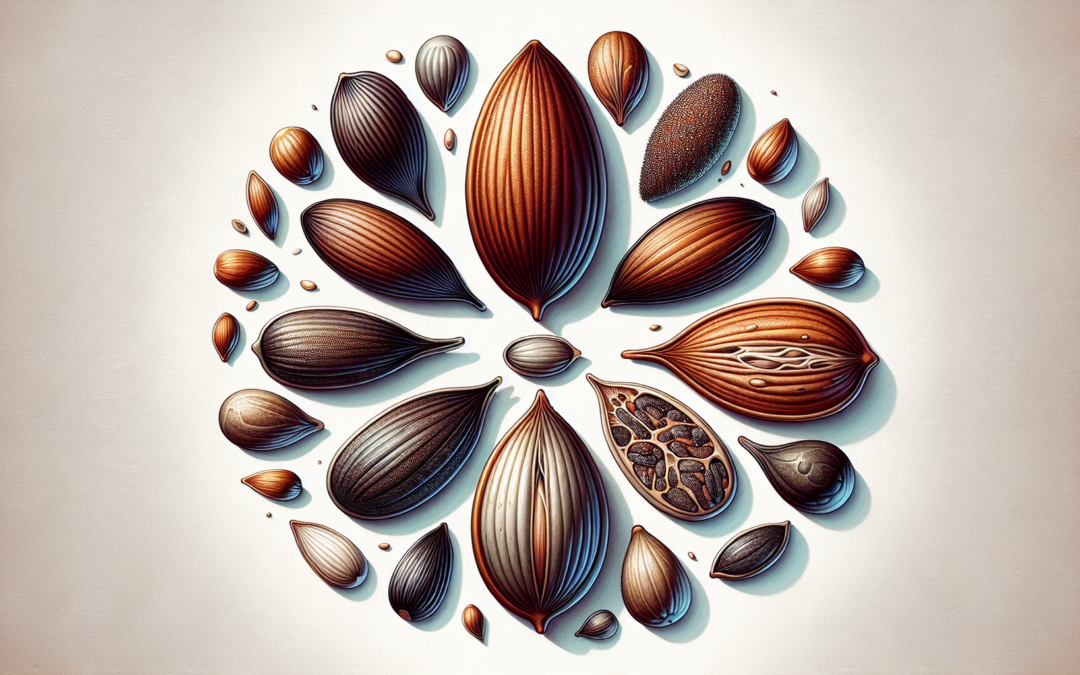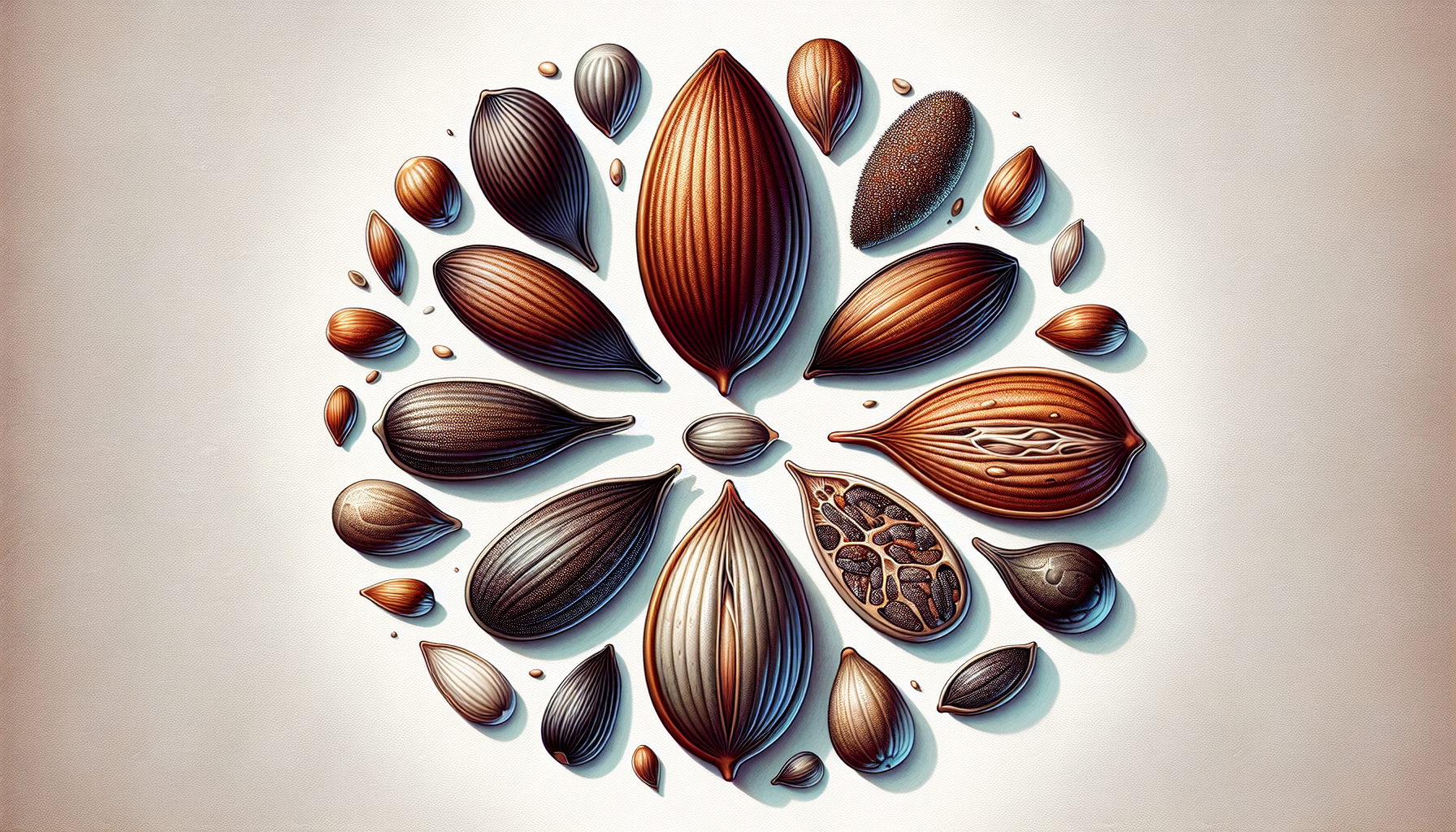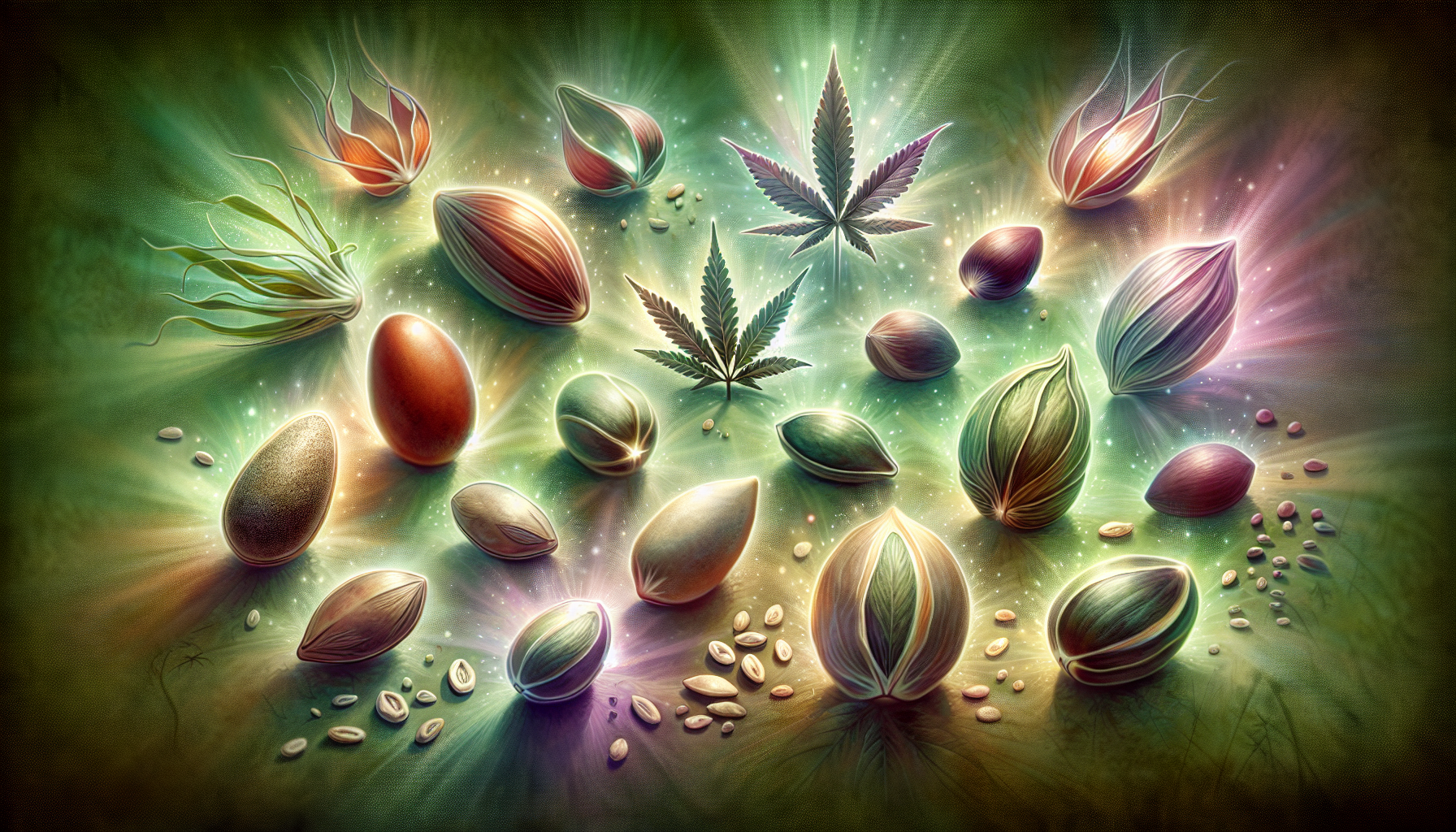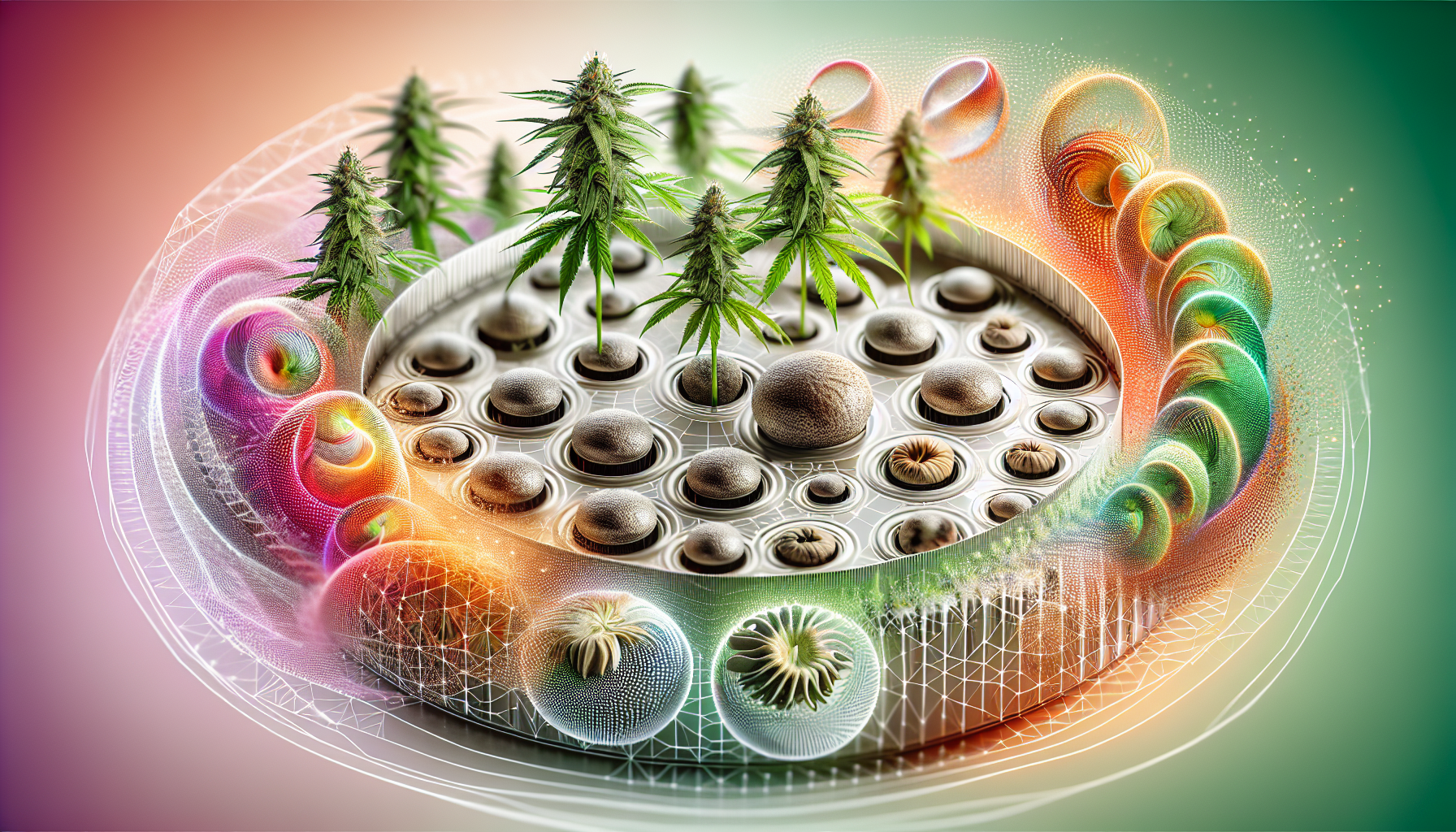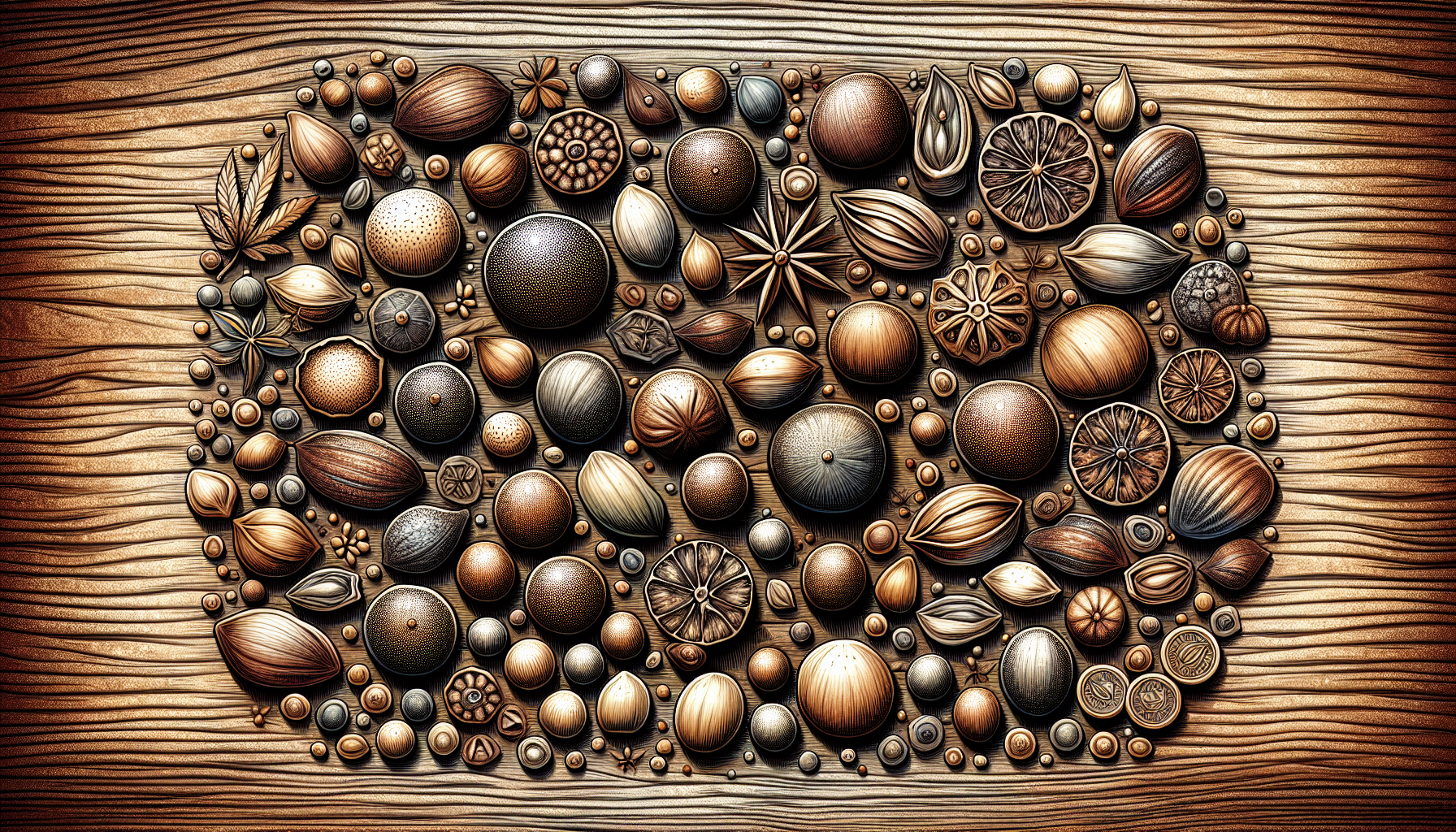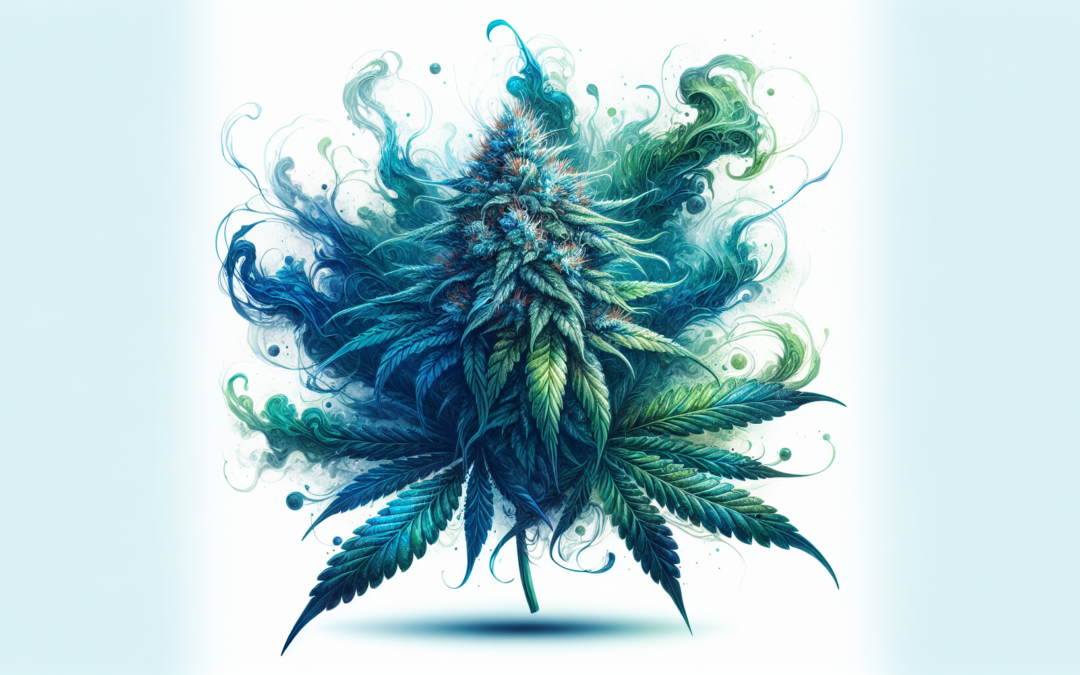
Understanding the Blue Dream Strain: Effects, Growing Tips, and User Reviews
If you want the energising cerebral boost of a sativa, coupled with the relaxation vibes of a great indica, the Blue Dream strain promises just that. Renowned for a harmonious high that caters to both day and night, its legendary status has been cemented in the underground Cali cannabis community.
In this guide, we uncover what makes Blue Dream such an iconic strain, including its effects, growth techniques, and avid user feedback, without overwhelming jargon or fluff.
Key Takeaways
- Blue Dream’s balanced high combines the best of both indica and sativa, offering both cerebral stimulation and soothing body relaxation without heavy sedation.
- The strain stands out for its sweet and fruity flavours, high THC content, and unique profile, thanks to terpenes like myrcene, pinene, and caryophyllene.
- Growing Blue Dream demands precise care, emphasising mimicking the Mediterranean climate, nutrient management, and proper harvesting and curing techniques to maximize potency and flavour.
Quick Summary
The Blue Dream cannabis strain, widely celebrated for its balanced effects and sweet berry aroma, has an intriguing history and distinctive characteristics that contribute to its popularity.
Origins and Breeding:
Blue Dream originated in California, a hub of innovative cannabis breeding. The strain is a hybrid cross of the indica-dominant Blueberry and the sativa-dominant Haze strains. This combination was intended to create a balanced hybrid offering both cerebral stimulation and physical relaxation. Despite its widespread popularity, the exact breeder remains unknown, though DJ Short’s influence through his “Blue Family” strains, including Blueberry, is significant in its lineage.
Chemical Profile:
Blue Dream’s chemical composition varies, but typical profiles show THC levels ranging from 17% to 24%, with low CBD content (around 0.1%). It also contains notable levels of CBG (about 0.4%) and a rich terpene profile dominated by myrcene, which contributes to its musky, herbal flavors. Other terpenes like pinene, caryophyllene, and limonene add to its unique aroma and potential therapeutic benefits.
Sensory and Therapeutic Attributes:
- Appearance: Blue Dream is known for its large, dense buds with a blue hue and a frosty layer of trichomes.
- Aroma and Flavour: Users often describe its scent as a mix of sweet berries and earthy undertones, with a similar flavour profile that is both sweet and slightly herbal.
- Effects: Blue Dream is praised for its well-balanced effects, providing an initial cerebral rush followed by a gentle body relaxation. This makes it a versatile strain suitable for daytime use, creativity, and social activities.
- Medicinal Benefits: It is commonly used to manage symptoms of stress, depression, chronic pain, and inflammation. Its long-lasting effects are particularly beneficial for those needing sustained relief.
Unique Historical Tidbits:
- Proliferation: Blue Dream became especially popular through its distribution by Oaksterdam University in the early 2000s. Oaksterdam played a crucial role in spreading high-quality cannabis genetics.
- Cultural Impact: Despite being somewhat overgrown and considered “generic” by some modern cannabis connoisseurs, Blue Dream remains a staple in many dispensaries, particularly on the West Coast, due to its reliable effects and ease of growth.
Blue Dream’s combination of favourable growing traits, robust yields, and wide-ranging effects ensure its continued popularity among both recreational and medicinal users.
Exploring the Origins of Blue Dream

The tale of Blue Dream began in the sun-kissed coastal town of Santa Cruz, California, around 2003, quickly ascending as a beloved medical marijuana strain renowned for its balanced high. The strain was likely developed by growers in the Santa Cruz area who were experimenting with crossing popular strains to create new, desirable hybrids.
It’s not just the origins that make Blue Dream remarkable; it’s the rockstar genetics—a harmonious union of the sweet, mellow relaxing body high of Blueberry, an indica strain, and the vibrant, uplifting cerebral head high of Silver Haze, a sativa strain—that set the stage for its success.
- Parent Strains:
- Blueberry: An indica strain known for its sweet, berry-like aroma and relaxing effects. Blueberry was developed by DJ Short, a prominent breeder.
- Haze: A sativa strain known for its uplifting and cerebral effects. Haze has a long history and is known for its complex breeding background involving landrace strains from Mexico, Colombia, Thailand, and India.
Veteran stoners quickly recognized the unique equilibrium that Blue Dream offered—a reflection of the best traits from both indica strains and sativa domains.
The strain emerged as a rare stand-out in the cannabis world: a sativa-dominant hybrid with the potential to soothe the weary and stimulate the imaginative. It’s a testament to the strain’s versatility and the expertise of its cultivators that Blue Dream became a household name, an azure haze that represents the pinnacle of hybrid innovation.
The Unique Profile of Blue Dream Cannabis Strain

Blue Dream is a hybrid strain that dances on the senses with its sweet, fruity flavors and floral undertones. Consumers enjoy Blue Dream for its sweet, fruity flavor and aroma, particularly the notes of blueberries and other berries. Upon inspection, the buds reveal a captivating visual feast—a tapestry of light green adorned with blue to deep purple hues, accented by blue hairs and a frosty coating of trichomes. This visual allure hints at its prestigious lineage, a genetic masterpiece composed of 60% sativa and 40% indica, earning it the moniker Azure Haze. In the world of cannabis strains, blue dream is one that truly stands out.
The strain’s aromatic bouquet and delightful flavors owe their depth to a medley of terpenes such as myrcene, pinene, and caryophyllene. Myrcene, with its herbal charm, and pinene, adding a fresh pine twist, contribute to the strain’s therapeutic benefits, while caryophyllene rounds out the profile with a hint of spiciness. The higher-than-average THC content amplifies Blue Dream’s potency, creating a dynamic range of effects that have captivated the hearts of cannabis enthusiasts and solidified its reputation as one of the best strains available.
Experiencing Blue Dream: A Symphony of Effects

Indulging in Blue Dream offers a harmonious interplay of effects, including:
- Cerebral stimulation
- Body relaxation
- Mood enhancement
- Long-lasting relief
Consuming Blue Dream can enhance mood and provide energy without causing couch lock or burnout.
It’s akin to attending a grand symphony where each note is meticulously composed to create an enchanting experience.
The versatility of Blue Dream caters to various needs—whether seeking energy for daytime activities or relaxation in the evening, this strain adapts to the rhythm of your life, making it a favorite among cannabis aficionados.
Cerebral Stimulation and Creative Energy
The sativa heritage of Blue Dream infuses users with an uplifting cerebral head high, igniting the sparks of creativity and bringing ideas to life. Like a muse whispering in the ear of an artist, this potent cross delivers a surge of creative energy that can completely motivate and transform the mundane into the extraordinary. The strain’s cerebral effects elevate thoughts, allowing for life to be seen through a lens of vibrant focus, propelling users into a realm of inspired productivity.
In social settings or solitary reflection, Blue Dream’s mood-enhancing qualities foster a sense of joy and elation, making it an ideal companion for creative endeavors or simply enjoying the beauty of life. The cerebral stimulation it provides is more than just a fleeting rush; it’s a sustained wave of completely motivated and focused energy that encourages exploration and expression, a testament to its sativa-dominant roots.
Balanced Body High Without the Couch Lock

While the mind soars, Blue Dream ensures the body is not left behind, imparting a mellow relaxing body high that caresses without overpowering. Consuming Blue Dream provides a balanced body high without the heavy sedation of couch lock. The balanced high is the embodiment of tranquility, allowing the body to unwind and bask in a sense of well-being without succumbing to the dreaded couch lock. This gentle body high is a testament to the strain’s indica side, offering a soothing embrace that alleviates muscle pain and discomfort, yet preserves the ability to stay engaged and active.
The absence of heavy sedation makes Blue Dream a versatile strain, perfect for those seeking relaxation that doesn’t hinder productivity or dampen the spirit. Whether it’s tackling a to-do list or simply enjoying a peaceful evening, the balanced high of Blue Dream harmonizes the needs of both the mind and body, providing a sanctuary of comfort without the weight of lethargy.
Mood Elevation and Long-Lasting Relief
The allure of Blue Dream extends beyond the cerebral and physical to the emotional realm, offering a sanctuary for those grappling with stress, anxiety, or depression. The strain’s capacity for mood elevation is renowned, with users often reporting a sense of well-being that envelops them like a warm blanket on a chilly evening. It’s a beacon of hope for those seeking solace, providing long-lasting relief that can transform a turbulent inner world into a serene landscape.
Blue Dream’s euphoric effects are more than a mere escape; they provide a bridge to a more positive outlook and a renewed zest for life. Its ability to alleviate stress makes it a valuable ally for pain management, offering a reprieve from the incessant demands of the day. The immediate onset of these relaxing effects interacts with the endocannabinoid system, offering anti-inflammatory benefits and a comfort that lingers on the tongue long after the smoke has cleared.
Navigating the Hybrid Nature: Indica and Sativa Balance

Blue Dream is a masterful navigator of the cannabis landscape, expertly balancing the sativa effects of cerebral upliftment with the soothing embrace of indica relaxation. The onset begins with an energizing burst, fostering an atmosphere of mood enhancement and creativity that gradually gives way to a comforting relaxation that soothes without sedating. This duality makes Blue Dream a versatile ally, capable of banishing a variety of ailments with its functional focus, yet offering the tranquility needed for effective pain relief.
Its potency, while higher than average, remains accessible to beginners and veterans alike, contributing to the widespread adoration that Blue Dream garners among cannabis enthusiasts. It’s a testament to the careful craftsmanship of its cultivators that such a perfect strain exists, offering a sativa-dominant experience that is both energizing and calming, and undeniably coveted within the cannabis world.
The Art of Growing Blue Dream Plants (for those in jurisdictions where growing is legal).
For those residing in regions where the cultivation of cannabis is a legal endeavor, growing Blue Dream plants is an art that requires both dedication and finesse. These azure wonders demand frequent training and topping to ensure a bounty that reflects their full potential, with a flowering period that spans a patient 9 to 10 weeks.
Yet, the artistry of cultivating these plants extends beyond mere patience; it’s about nurturing them through each stage, from seedling to harvest, to unlock the true essence of the blue dream effects.
Ideal Conditions for Cultivation
Creating the perfect strain backdrop for Blue Dream requires mimicking the climate of the Mediterranean—ample sunlight and a temperature sweet spot between 65-85 degrees Fahrenheit are key. These conditions coax the plants to display their vigorous growth, with a hearty appetite for nutrients like nitrogen and magnesium that fuel their lush development without risking nutrient burn. But Blue Dream is not just about basking in the sun; it craves structural support like trellising or staking to bear the weight of its dense buds and prevent the snapping of branches as they swell with the promise of harvest.
Whether tucking them into an indoor setup or letting them stretch their limbs in the great outdoors, Blue Dream’s adaptability shines through. Indoor growers will find that techniques like topping and training are essential to manage space and ensure each plant receives its share of light and air, laying the groundwork for a flourishing garden of these sativa-dominant jewels.
Harvesting and Curing for Optimal Potency
The crescendo of growing Blue Dream is the harvest, a critical juncture where timing is everything to capture the strain’s potent cross of flavors and effects. Careful observation of the trichomes, seeking that milky white sheen, signals it’s time to wield the scissors with precision, safeguarding the delicate trichomes that house the strain’s essence.
To ensure a clean cut and preserve the trichomes and the strain’s potency and flavor, follow these steps:
- Employ sharp, sterilized scissors.
- Hold the stem of the plant firmly.
- Cut the stem cleanly, avoiding any unnecessary damage to the surrounding buds.
- Handle the harvested buds with care to prevent any loss of trichomes.
By following these steps, you can maximize the quality and potency of your Blue Dream harvest.
Drying and curing, though often overlooked, are the final steps in honoring the strain’s full potential. A slow, controlled dry in a dark, temperate space lays the foundation for a successful cure, where airtight containers become the sanctuaries for the buds to mature. This meticulous process elevates the flavor and potency, allowing the chlorophyll to break down and the terpenes to flourish, culminating in a product that is a true representation of the best strains in the cannabis world.
Proper storage post-cure, in cool, dark conditions, ensures the THC remains potent and the aromatic profile intact, ready to be enjoyed by cannabis enthusiasts and medical users alike.
Common Challenges and Solutions
Despite its forgiving nature, growing Blue Dream can present its share of challenges, but with the right knowledge, even a beginner can guide these plants to a prosperous yield. Here are some tips to help you along the way:
- Ensure the plants receive the right balance of nutrients.
- Be vigilant against pests like spider mites and caterpillars that can threaten an outdoor grow.
- Monitor the plants closely and maintain optimal environmental conditions to foster their health and vigor.
By following these tips, you can increase your chances of a successful Blue Dream grow.
By addressing these common hurdles with informed strategies, growers can navigate the cultivation journey with confidence. It’s a continuous learning process, one that rewards the mindful gardener with a rich harvest that captures the essence of the Blue Dream cannabis strain and its enchanting effects.
Comparing Blue Dream with Other Strains
Blue Dream shares similarities with a variety of other strains, each with its own unique qualities, yet it stands out with its distinct balance and versatility. It is similar to:
- Maui-Wowie, delivering an energizing and creative effect, complemented by a sweet and fruity flavor profile, making it suitable for daytime use.
- Strawberry Cough, mirroring the euphoric and stress-relieving qualities, with the added benefit of a blend of delightful flavors.
- 9 Pound Hammer, sharing its terpenes and THC content, but veering towards evening use for its sedative effects, in contrast to Blue Dream’s flexibility.
Blue Dream also shares a genetic link with the tranquilizing Blueberry, yet it distinguishes itself with a more energizing and less sedative influence. This combination of energizing sativa effects and calming, mellow relaxing body high positions Blue Dream as a great strain in the eyes of both recreational users and medical marijuana patients, offering a unique experience that is hard to match by other strains in the cannabis world.
User Reviews and Testimonials
People who have tried Blue Dream often praise it highly. One person dealing with long-term stress said it made them feel better and more confident. These stories show how well Blue Dream works and why users love it.
Many reviews talk about how Blue Dream boosts creativity and makes life more enjoyable. These positive experiences from different users highlight the strain’s versatility and effectiveness, making it a favourite among cannabis enthusiasts and medical users alike.
Anecdotal Trip reports (sourced from Leafly.com):
- “Incredible strain, especially for wanting to get activities and responsibilities done. It provides a very energetic & alert high that will give you an adventurous demeanor. Two dabs of blue dream cake badder had me cleaning my kitchen and room while listening to some of the finest cannabis friendly music. A great smoke for the person who wants to get out or just get up to get some shit done!”
“Finally, I’ve gotten to try Blue Dream. This is a highly touted sativa-dominant hybrid that does not fail to live up to it’s hype. Right off the bat I’ve got to say, this is one of the best strains I have ever smoked. Absolutely phenomenal in nearly every aspect. Top 5 strain all time for me. Now, to the characteristics.. The buds were absolutely covered in trichomes inside and out, nice to look at. The smell of this bud is simply amazing, it has a very strong blueberry smell and the taste is similar, but subdued a bit in comparison. The high is simply top notch, where awesome uplifting sativa effects mix with a calm relaxation make this strain one of the best. Medically, this strain is effective against anxiety, depression, and stress; I’m sure there are more, but that’s what I use this strain for and it does a great job. Simply put, If you have a chance to try this strain – do so, you will not be disappointed. Highly recommended. Nearly perfect strain with solid genetics.”
Summary
Blue Dream stands as one of the top strains available, epitomizing the balance between sativa and indica that many seek in their cannabis experience. Embrace the dream, and may your encounter with Blue Dream be as enchanting as the azure skies it’s named after.
Frequently Asked Questions
Why is Blue Dream considered a balanced strain?
Blue Dream is considered a balanced strain because of its genetic composition of 60% sativa and 40% indica, which creates a harmonious blend of uplifting cerebral effects and soothing physical relaxation, making it versatile and appealing to a wide range of consumers.
What are the ideal growing conditions for Blue Dream plants?
To ensure optimal growth of Blue Dream plants, provide a Mediterranean-like climate with plenty of sunlight and maintain temperatures between 65-85 degrees Fahrenheit. Additionally, ensure a rich supply of nutrients, especially nitrogen and magnesium, and use sturdy support structures to manage its growth and yield.
How does Blue Dream compare to other popular cannabis strains?
Blue Dream is similar to strains like Maui-Wowie and Strawberry Cough but stands out with its balanced effects and versatility, offering uplifting and creative effects that can be enjoyed at any time of day. It’s less sedating than other popular strains like 9 Pound Hammer and Blueberry.
What should be considered when consuming Blue Dream for the first time?
When you consume Blue Dream for the first time, it’s important to keep in mind its high THC content and start with a small dose to assess its impact. Known for its sweet, fruity flavor and aroma, particularly the notes of blueberries and other berries, Blue Dream can enhance mood and energy levels, making it suitable for medicinal use throughout the day without feeling couch locked or burnt out. Hydration and careful dosage management can help reduce potential side effects such as dry mouth or anxiety.
How do users typically describe the effects of Blue Dream?
Users typically describe the effects of Blue Dream as uplifting, mood-enhancing, and creatively invigorating, followed by a relaxing body high that doesn’t lead to couch lock. It’s also known for relieving stress and elevating mood, making it popular for both recreational and medicinal use.

